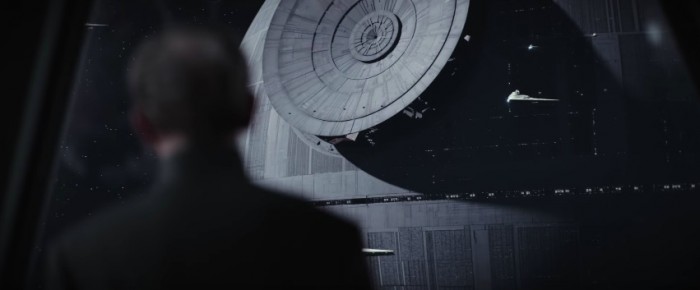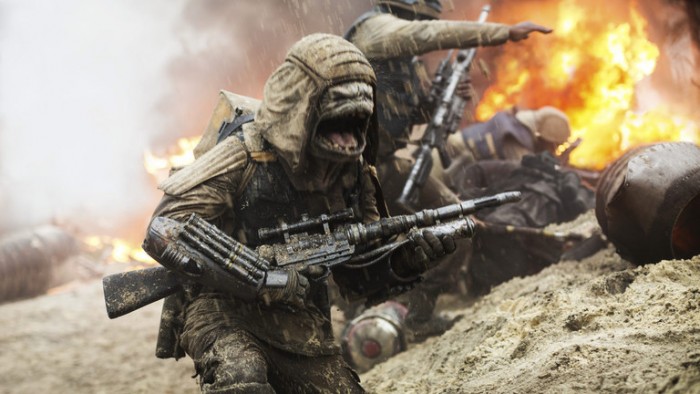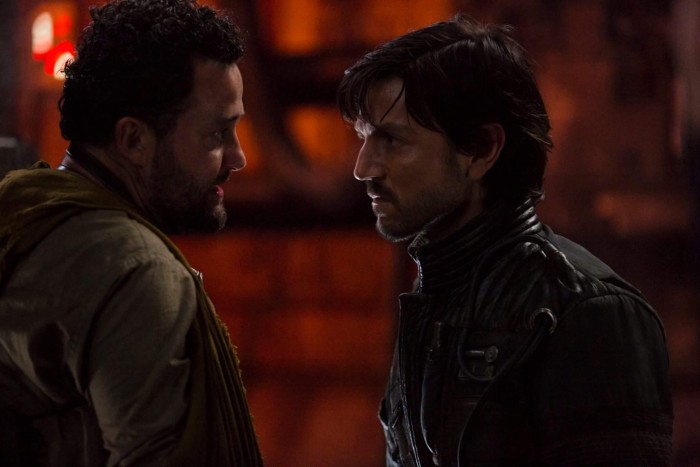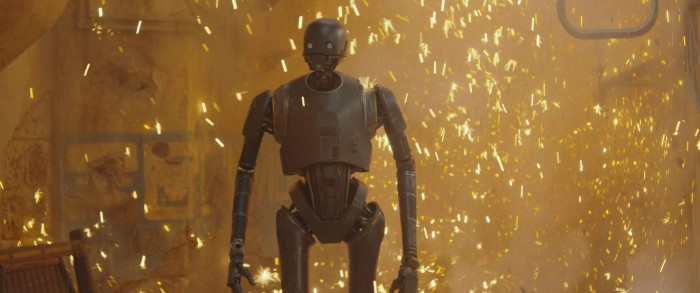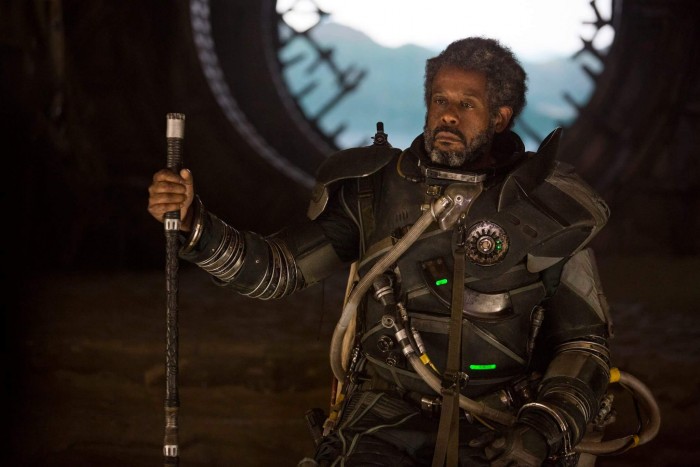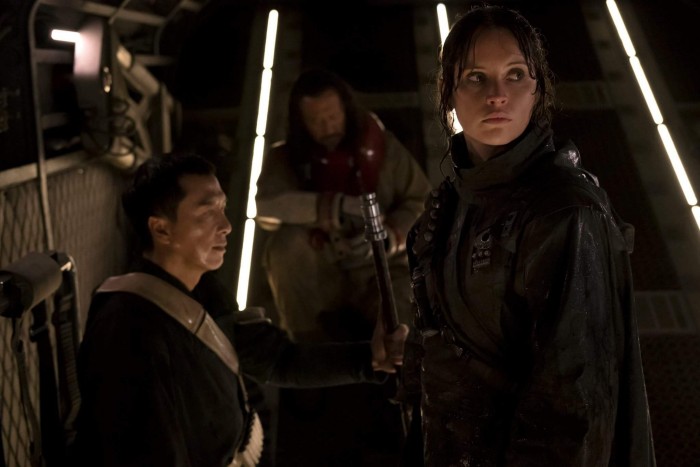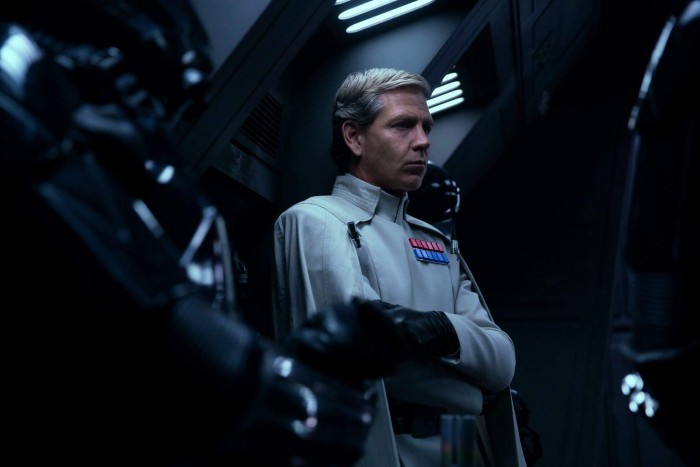'Rogue One': A Spoiler-Free Reaction To 28 Minutes Of Footage From The 'Star Wars' Spinoff
While no audience outside of Disney and Lucasfilm has actually seen the entirety of director Gareth Edwards' Rogue One: A Star Wars Story quite yet, we were among those invited to a sneak preview of 28 minutes of footage from the upcoming Star Wars spin-off...and what we saw was often spectacular.
"Often" may be the key word there. How do you judge a 133-minute movie based on 28 minutes? You can't. That would be silly. To declare Rogue One a success or a failure after a half-hour preview would be a foolhardy endeavor. Without the context of the entire movie, it's impossible to judge any decision as a good choice or a bad one. All you can do is talk about what you enjoyed in the preview and what concerned you.
And for those worried, this is a spoiler-free reaction to what was shown.
Old Subject, New Look
Rogue One begins shortly before the events of the original 1977 Star Wars: the Rebel Alliance is barely getting by, the Empire rules the galaxy with an iron fist, and a certain top-secret super-weapon is in the final stages of construction. So all of the new design choices seen in Star Wars: The Force Awakens are rolled back to match those seen in the original trilogy. It's impressive how the film nails the aesthetic choices of the first three movies and it's often a little surreal to see imagery that hasn't been in theaters since 1983 on the big screen again.
But while the original trilogy was shot in a very classical style (all the better to accommodate extensive pre-CGI visual effects and echo George Lucas' Akira Kurosawa love), Rogue One is thoroughly modern. Handheld cameras wander through the dense crowds on alien planets. Characters dash toward the screen while the shot moves quickly enough to accommodate them. Everything is shot from specific perspectives to emphasize distance and scale, from spaceships blotting out the sky over cities to AT-AT Walkers looming over combatants during a ferocious urban firefight. While The Force Awakens was accused of being a little too slavish to the first three films in its design and execution, Gareth Edwards is steering the Star Wars universe toward a hard left turn, taking full advantage of this being a spin-off story to film the familiar in wholly unfamiliar ways.
A Lived-In World
In the 28 minutes of footage we saw, Rogue One repeatedly offered used its visuals to explore just how rough and weary the Star Wars universe can be. While the Stormtroopers may look exactly like the cannon fodder you've seen before, you've never seen one board a prison transport vehicle, hunched over in boredom, his shiny armor covered filthy from a hard day's work. While the secret Rebel Base on Yavin IV looks like the one seen in the original Star Wars, it's filled with activity and operated by men and women who look like they haven't slept in days. And while we didn't get a big cantina scene where a bunch of weird aliens show up to showcase the wild diversity of this fictional universe, it would feel redundant – with every scene populated by aliens and droids and creatures both practical and digital, every shot is its own little cantina scene. In Rogue One, other species aren't part of a showcase, they're part of the background, lingering in the margins, sometimes out of focus, to add a literally alien texture to the world.
The original Star Wars trilogy diverged from science fiction norms by presenting a galaxy where spaceships are hunks of junk and where everything breaks down. Rogue One picks up the baton and runs with it, dropping you into a world where everything feels a little dangerous.
Being a Rebel Kind of Stinks
In the original trilogy, it's made clear that the Rebel Alliance is a desperate lot, but the arrival of Luke Skywalker and Han Solo change the game and the films quickly become about their heroic personal quests set against the backdrop of a galactic civil war. But in the Rogue One footage we saw, no one emerges as a traditional hero to anchor the entire thing. All we see are desperate men and women making desperate (and often dark) decisions in the name of a desperate cause. One early scene involving Rebel spy Cassian Andor meeting an informant couldn't help but remind me of the classic French Resistance film Army of Shadows – while it certainly sounds romantic to fight the good fight against an oppressor, it's actually hard, emotionally brutal work where a collection of small evils must be weaponized against a greater evil.
In the full film, we'll surely get to learn more about Saw Gerrera's fringe band of rebels, who work separately from the Rebel Alliance and engage in tactics that are uncomfortable (and familiar to anyone who watches the news) at best. The Rebels simply don't have their shit together and they're hanging on by a thread. The relationships created by this dynamic feel fresh. No one quite trusts one another and the thought of a traditional "hero's journey" seems to be far from anyone's mind.
The Scene-Stealers
While the footage screened for us introduced us to the bulk of the film's ensemble and gave each major character at least one scene, we didn't really get to know Felicity Jones' Jyn Erso, Diego Luna's Cassian Andor, or Ben Mendelsohn's Director Orson Krennic, who appear to be the actual leads of the film. However, a few other characters already started to emerge as stand-outs.
In a film otherwise coated with desperation, Alan Tudyk's K-2SO feels like a welcome splash of comic relief, bringing deadpan comedy to the proceedings. A reprogrammed Imperial Security droid, this hulking monstrosity of a robot towers over humans and seems more than capable of dispatching enemies with the smallest amount of effort...which he accomplishes while also being temperamental and without a single social grace. Tudyk (who was on set in a motion capture suit and provides the character's voice) plays K-2SO like a sociopathic C-3PO, prissy and easily offended but perfectly comfortable dismantling entire squads of Stormtroopers. He's a hoot.
The other early stand-out is Chirrut Îmwe, played by Chinese actor and martial artist Donnie Yen. A blind warrior monk living on the Imperial-occupied moon of Jedha, he has devoted his life to the Force, working to spread the good word of the mystical energy that binds all life together despite not having any Jedi abilities. But his zealotry may be the only weapon he needs, as he proves in a hand-to-hand action sequence that was the highlight of the footage. We'll surely learn more about Chirrut in the finished film, but there's just something special about watching Yen spout wisdom while shattering Stormtrooper skulls.
The Glue Between Mediums
When Lucasfilm removed the old Star Wars expanded universe from official canon, they set out with a blank slate and a timeline in desperate need of new events. Since then, each new movie, television show, book, and comic has been overseen by the Lucasfilm story group, a collaborative effort to build a refined Star Wars universe that makes sense, contradicts itself as little as possible, and exists as a unified whole rather than in small compartments. Rogue One is the first time you can feel this new approach at work in a significant way, with the film finding ways to tether itself to the saga's timeline in ways both obvious and subtle.
For example, the character of Saw Gerrera (Forest Whitaker) originated in Star Wars: The Clone Wars, offering a direct link between Rogue One and the small screen chapters of the saga. A brief cameo from a certain character directly ties Rogue One to the prequel trilogy, offering a hard, unbreakable bridge to George Lucas' controversial (and no longer ignored) films. A quick reference to the Journal of the Whills sees the film incorporating tidbits of Star Wars lore that would only be familiar to hardened fans. A few amusing cameos from some original trilogy characters (and no, not whom you'd expect) further ground Rogue One in its very specific place. Hell, the film even pays off the events of the recent novel Catalyst, which now feels cleverly reverse-engineered to provide those who read the books and watch the movies with an additional emotional punch.
The message is clear: Star Wars is bigger than one movie at a time and everything matters. Whether this will prove exciting or exhausting in the long run remains to be seen.
What Does It Mean to Not Have a Crawl?
Rogue One opens with the classic "A long time ago, in a galaxy far, far away..." and then...it smash cuts right into the action. As previously reported, there is no opening crawl here, a decision that allows Rogue One to feel separate from the core "episodes," even if that iconic opening text weaves it directly into the larger tapestry. The film, quite literally, hits the ground running.
For devoted Star Was fans who have seen the original trilogy a dozen times, this won't be an issue, but it's easy to wonder how this lack of grounding will play for more casual audiences. At no point does Rogue One pause to remind you what the Rebel Alliance is or what the Empire does or why any of this matters. It simply assumes that you know the finer points of the Star Wars universe. For a crowd of devoted midnight-on-Thursday theatergoers, there won't be a problem. But what about the normal folks, those who may not fully understand that Rogue One isn't a sequel to The Force Awakens and don't have Star Wars in their blood? The film really tosses you into the deep end without a life jacket and those who know how to swim will be fine...but don't be surprised if some people come out of this one scratching their heads.
Can You Judge the Pacing of a 28-Minute Preview?
The question proposed in this sub-header was the big discussion post-screening. It wasn't entirely clear if the footage we saw was the completely, finished version or if it had been chopped down just a bit for preview purposes. In any case, Rogue One seems to move fast, maybe even too fast. After the (really excellent) opening ten minutes, the film begins to leap between characters and locations at a dizzying pace, bringing us to a half-dozen different planets and moons and space stations in a matter of minutes, introducing characters and plunging them into action before we can even learn their names. When viewed in the context of the larger film, this speed may work and may have been a necessary choice to get to the meat of the story as quickly as possible. But in these 28 minutes, it was jarring, as if we were watching the film at 1.5x speed. While each location feels rich with detail and each character feels promising, their introductions often feel a little too rushed and cut right down to the bone.
But like I said at the top of this whole thing, making any hard judgments on 28 minutes of a 133-minute movie is foolhardy at best. It doesn't feel like a deal breaker. Yet.
Rogue One hits theaters on December 16, 2016.

